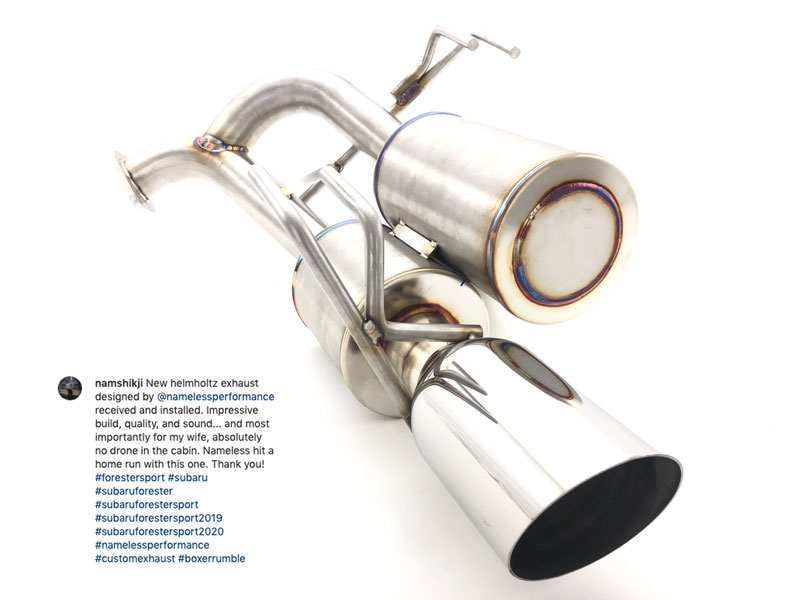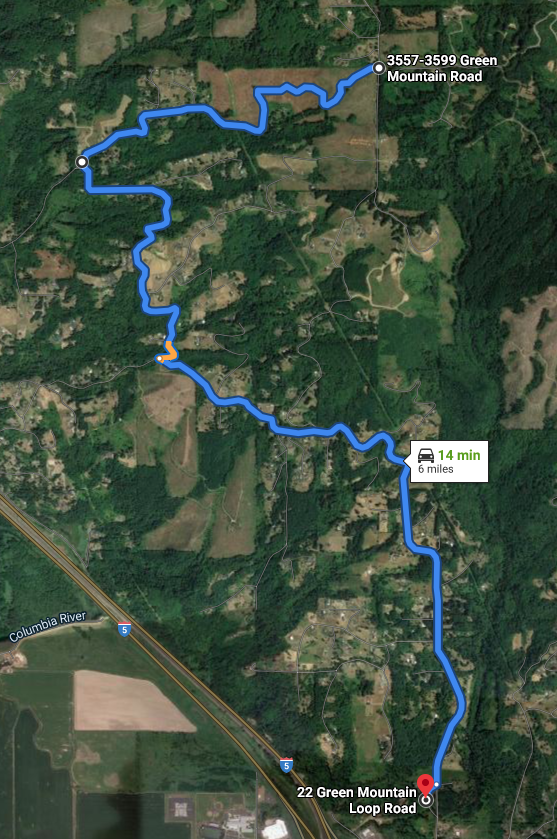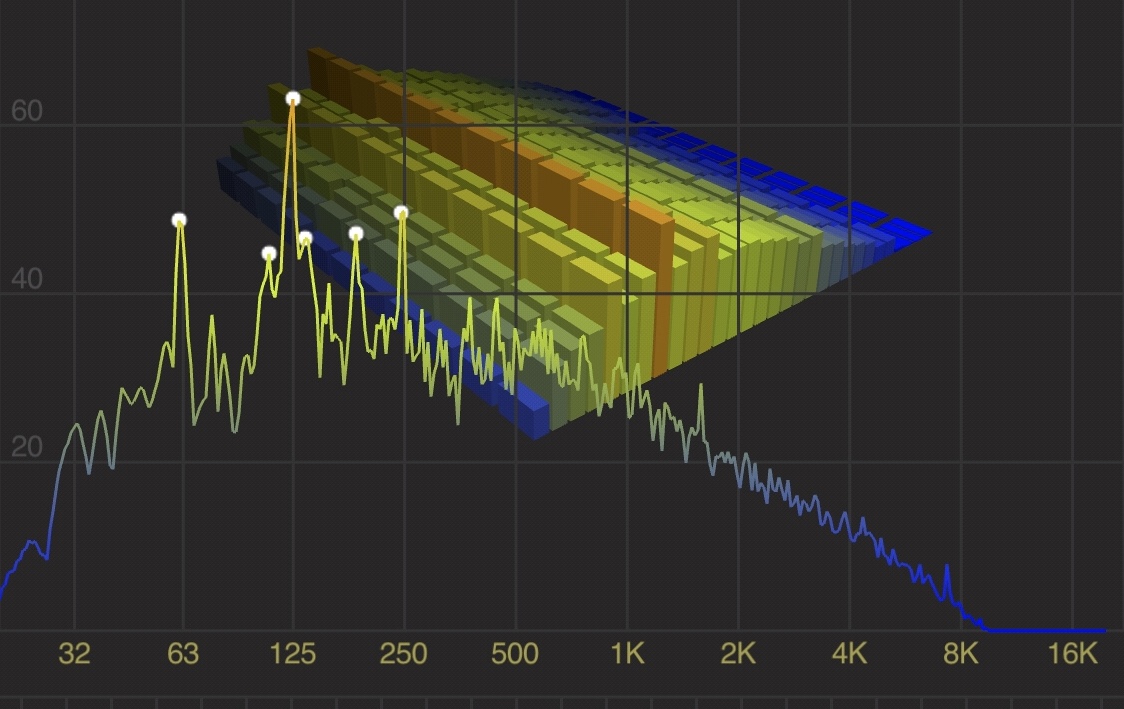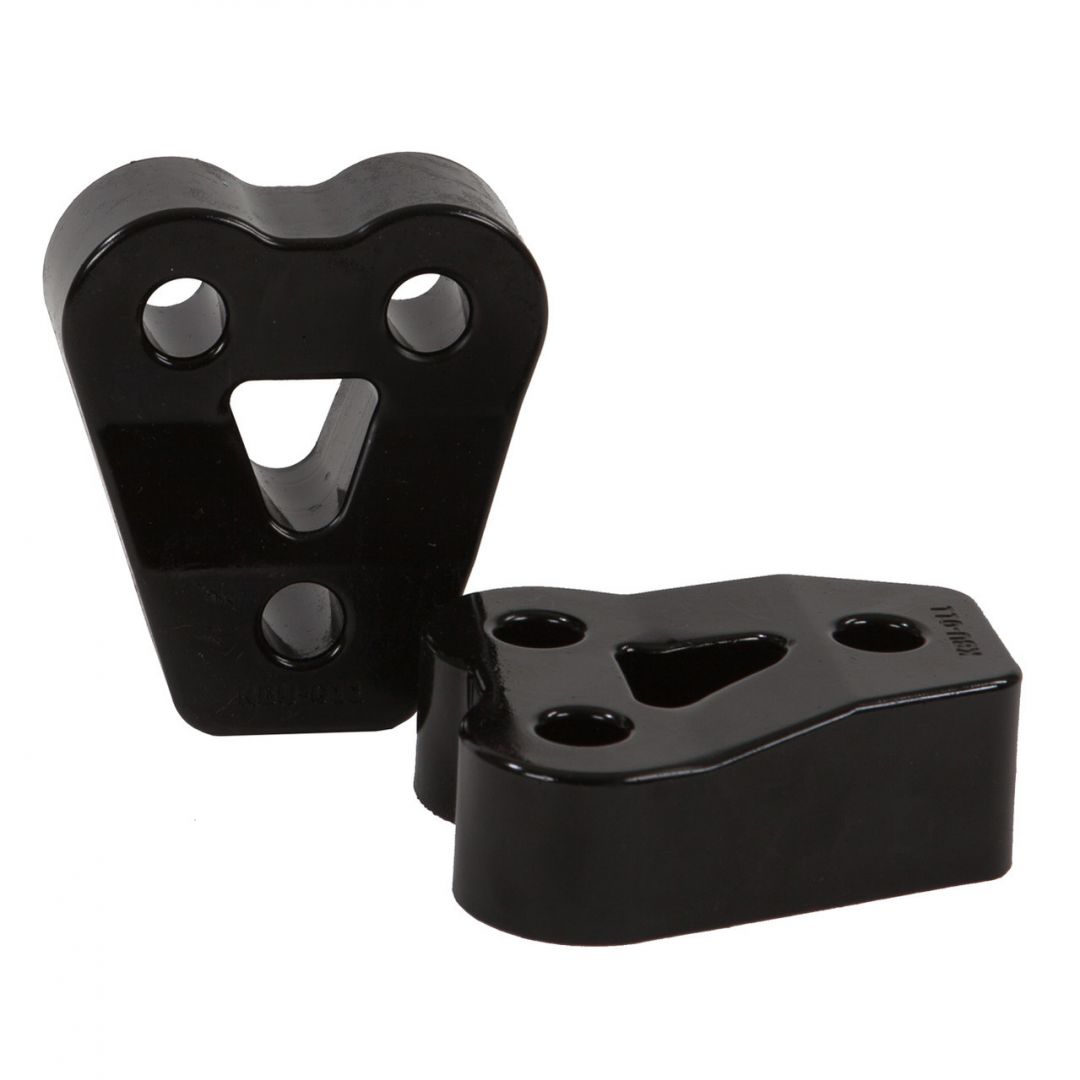UPDATE: Looking for a Dual Chamber Exhaust for your vehicle? Check out all of our options RIGHT HERE.
The community has spoken and we are listening. It has been a great start to the year, we have made a lot of new friends in the communities who have cars powered by the FB25 Direct Injected engine. Among the multitude of customers who love their exhaust systems and are eager for updates on headers, midpipes, intakes and other products that bring the sound of the FB25 to life, we have had a handful who fed back some constructive criticism regarding the designs that we have offered on the exhaust for the Forester and Outback, with a few Legacy 2.5i owners chiming in as well. Primarily, there's a segment of the market who is interested in a solution that has less cabin noise than our current muffled option. And we have the solution

So what did we do? Listen and improve!
Getting an exhaust note to match our customers interests has always been part of our business model - we are one of the only companies who invests time in making a variety of sound levels of our exhausts systems for all vehicles so that we can get you the sound that you want. Generally speaking that has been a variety of muffling levels, from the muffler delete to a large muffler.
With the uptick in popularity of CVT gearboxes in a number of newer vehicles, with many like the Forester, Outback and Legacy exclusively featuring the CVT, the challenge of getting a good sounding exhaust out the back of the vehicle without some drone characteristic inside the car is a challenge. Whether it's driving in an area where you end up at a low rpm and moderate load (or intelligent mode without use of the flappy paddles in these cars) there is some range of the RPM where the cabin noise is more significant than many of our customers want. We want to be able to hit the target for all segments of our market and we had some solid feedback from some of our customers that the exhaust we built for the Forester was too loud during daily driving, specifically hill climbing under load.
 We tested a lot of options to try to reduce that cabin noise. We changed muffler packing and tested four different muffler packing substrates finding that all of our alternate packing materials including some that our competitors use like stainless wool didn't hold a candle to the signature sound we achieve with our medium density ceramic packing material in our hand built mufflers.
We tested a lot of options to try to reduce that cabin noise. We changed muffler packing and tested four different muffler packing substrates finding that all of our alternate packing materials including some that our competitors use like stainless wool didn't hold a candle to the signature sound we achieve with our medium density ceramic packing material in our hand built mufflers.
We increased the muffler volume (overall size) by almost 150% and then 200%, both by changing length and overall diameter.
We also changed the tip diameter to verify it wasn't a factor in biasing frequency. And while each of these things made improvements, they weren't significant enough for us to hang our hat on and release as a differentiated product from our standard 5" muffler. Back to the drawing board.
Identifying The Target
 So we found a hill, Green Mountain Road to be exact, that has almost a thousand feet of elevation gain over a few miles. It basically goes straight up for a long long time. It became our spot to frequency analyze a vast number of exhaust options we bolted up to our Forester Sport. As we tested up this hill, we found that at load while climbing a hill, in Intelligent mode, the CVT would just camp out at 1800-2000rpm, and you could give a significant increase in throttle with the only result being a change in sound with little to no change in RPM. This became our RPM to target.
So we found a hill, Green Mountain Road to be exact, that has almost a thousand feet of elevation gain over a few miles. It basically goes straight up for a long long time. It became our spot to frequency analyze a vast number of exhaust options we bolted up to our Forester Sport. As we tested up this hill, we found that at load while climbing a hill, in Intelligent mode, the CVT would just camp out at 1800-2000rpm, and you could give a significant increase in throttle with the only result being a change in sound with little to no change in RPM. This became our RPM to target.
The larger we went on muffler size, the more we found ourselves losing the best notes in the signature sound of the exhaust along with the frequencies we wanted to diminish, and even then it took a LOT of muffler to achieve that goal. So we turned to science to design a Helmholtz resonator to cancel our 1800-2000rpm frequency range without effecting any of the great sounds that we liked about the exhaust system at full throttle and in the upper range of the powerband.
Helmholtz resonators are something that we are very familiar with, having used them in a variety of exhaust systems over the years, from our quad exit Hyundai Genesis exhaust to our BRZ downpipe. And we have had good success with them. But lets back up a bit, what is a helmholtz resonator? It's pretty simple actually - you know when you blow in a coke bottle and it makes a sound? That's a hemholtz resonator. The compression of the air inside the bottle results in a tone being generated. As the size of the bottle or amount of liquid in it changes, the tone that is generated changes as well. Helmholtz resonators are no different - they utilize a fixed diameter and length tube into a closed chamber of a given volume to geneate a frequency.

So how do we use this for exhaust resonance tuning? In a very clever way, that's how - we take a frequency analyzer along with us while driving in areas where the exhaust gets a little boomier than we prefer, and we measure that frequency at a given RPM, which shows us exactly what frequency we have to target. As we can see from this frequency analysis, our offending intelligent-mode 1800RPM frequency is right around 122hz (the tall peak is on the graph to the right). Cancelling that will make a significant impact on the low rpm drone in the vehicle, and our helmholtz resonator can do that by generating an inverse frequency to the one we are trying to cancel.
Designing a solution.
With that target frequency, we can calculate the design of our helmholtz resonator. In order to hit our target with an amplitude high enough to get a good effect, we start with a large closed chamber (our stainless steel coke bottle in this case), and then use our target frequency to calculate the length tube that connects the resonator with the exhaust system. Factor in the average exhaust gas temperature on one of these vehicles as it effects the speed of sound in our equation, and we are ready to start cutting metal and building a prototype.
The dimensions we come up with generate a frequency which cancels the ~120hz frequency we were targeting. The result is an exhaust that sounds great out the back of the vehicle, while avoiding drone at cruise under load no matter which mode you choose in the SI-drive system. Our new helmholtz resonated exhaust for the 2019+ Forester Sport is available now, and we plan to roll out this technology in more models that feature the FB25 direct injected engine. This new system retains 90% of the tone of our standard muffled exhaust system while cancelling the dominant resonant frequency of the exhaust that happens around 1800-2000rpm at cruise under load. We have test customers in the field running these designs for the 2019+ Forester Sport and 2014-2018 Forester 2.5i, and they have all had rave reviews.
We are currently working on designs for the 15-18 Legacy 2.5i and the 14-18 Forester 2.5i with more models to come. Let us know if you would like to see something similar for your platform in our R&D Requests Form, we are even looking for development customers on a number of these platforms who may want their existing exhaust to be modified with one of these resonators as part of our testing process. Click the link above to submit a request.
Want one for your 2019+ Forester? Get yours here as soon as they're released!
Rock Solid Mounting Qualified For Off Road Use.
 As you may have noticed, we have also upgraded our already industry-superior gusseted hanger assembly on our Forester Sport exhuast. With a higher number of our customers spending more time off road and putting these vehicles through their paces at a variety of angles, we have come up with an upgraded design for hanging these exhaust systems on the Forester, a vehicle which has a lot of moment-arm in the exhaust assembly which results in more movement of the exhaust. Our new design uses a twin bar design at each hanger location, and includes a pair of three hole urethane exhaust hanger bushings to isolate rotation and lateral movement of the system at both of the mounting points. The result is a rock solid assembly which prevents side to side motion. We have already brought this upgrade to the heavier helmholtz design as well as the rest of our Forester Sport exhaust systems. We now include a pair of the three hole bushings with each of these exhaust systems in all configurations of the exhaust.
As you may have noticed, we have also upgraded our already industry-superior gusseted hanger assembly on our Forester Sport exhuast. With a higher number of our customers spending more time off road and putting these vehicles through their paces at a variety of angles, we have come up with an upgraded design for hanging these exhaust systems on the Forester, a vehicle which has a lot of moment-arm in the exhaust assembly which results in more movement of the exhaust. Our new design uses a twin bar design at each hanger location, and includes a pair of three hole urethane exhaust hanger bushings to isolate rotation and lateral movement of the system at both of the mounting points. The result is a rock solid assembly which prevents side to side motion. We have already brought this upgrade to the heavier helmholtz design as well as the rest of our Forester Sport exhaust systems. We now include a pair of the three hole bushings with each of these exhaust systems in all configurations of the exhaust.